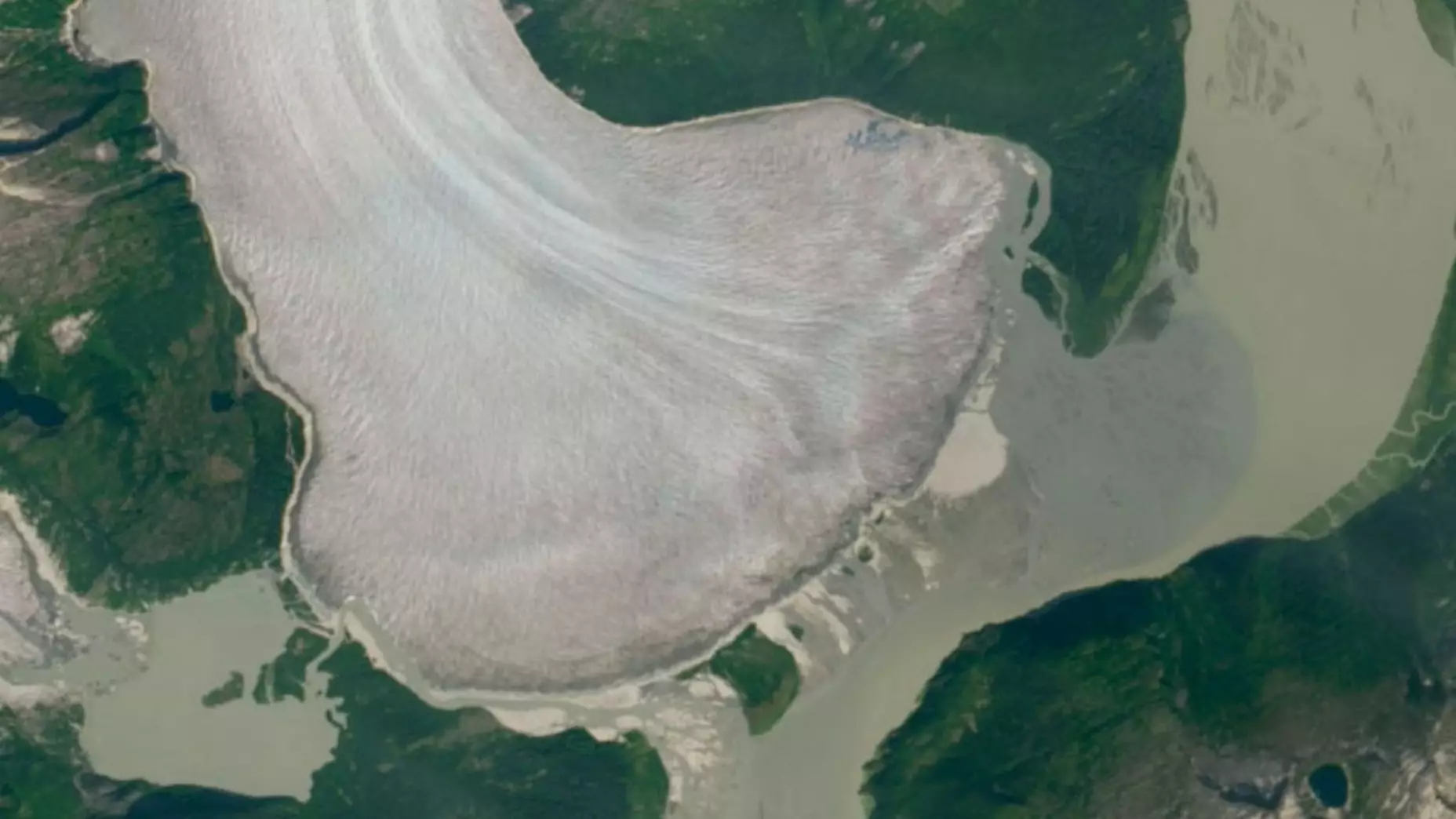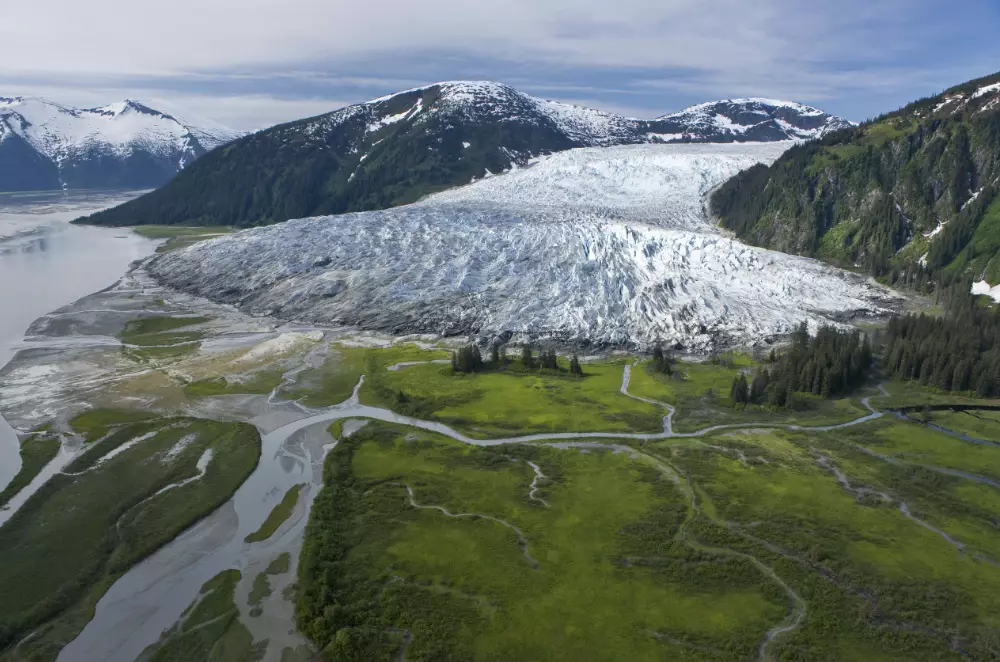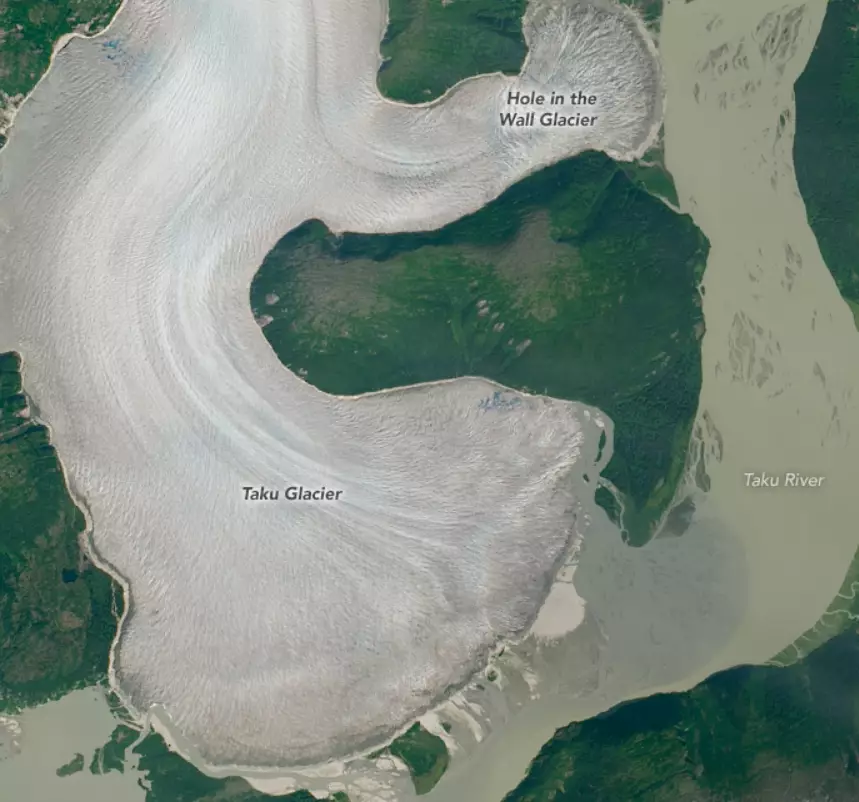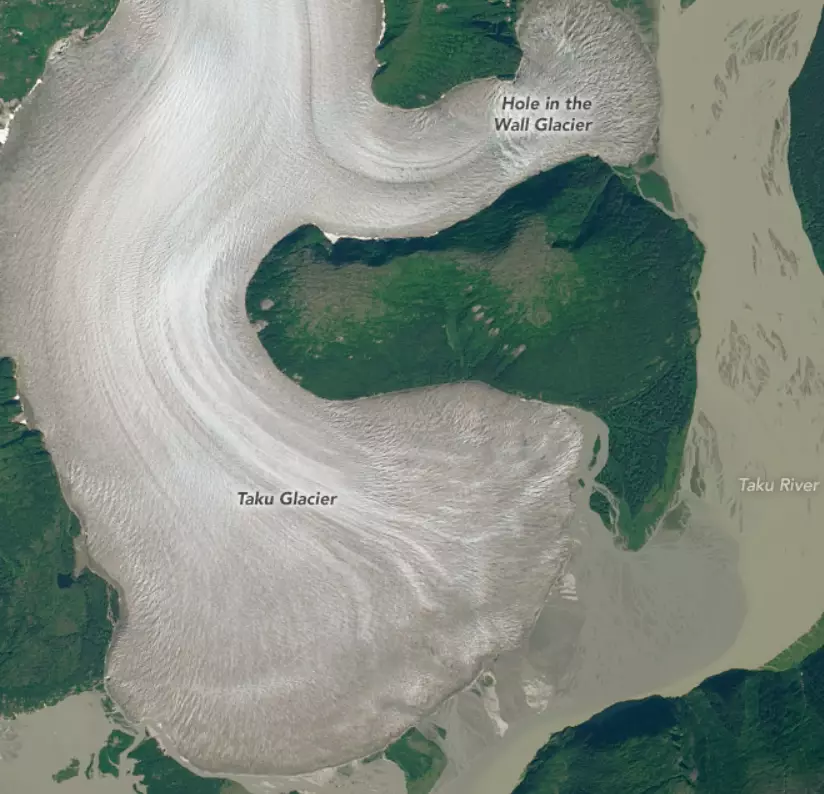
New analysis from NASA satellite images have revealed that the Taku Glacier, known as the world's thickest alpine glacier, is now melting.
The glacier is north of Juneau, Alaska, and is extremely thick - measuring 4,860 feet (1,480 meters) from surface to bed - and is also the largest in the Juneau Icefield.
For the past four decades, Taku has been able to withstand the effects of climate change, but the photos show it has lost mass and joined the many other retreating glaciers.
Advert
NASA said: "The natural-color images show the glacier on August 20, 2014, and August 9, 2019.
"The images were acquired by the Operational Land Imager on Landsat 8.
"Though subtle, the changes are most visible at the boundaries between the glacier and river."
Advert
Mauri Pelto, a glaciologist at Nichols College, has been studying the advance and retreat of glaciers around the globe for nearly four decades.
He said: "This is a big deal for me because I had this one glacier I could hold on to.
"But not anymore. This makes the score climate change: 250 and alpine glaciers: 0."

Pelto continued: "We thought the mass balance at Taku was so positive that it was going to be able to advance for the rest of the century.
Advert
"A lot of times, glaciers will stop advancing for quite a few years before retreats starts. I don't think most of us thought Taku was going to retreat so quickly."
However, it has - as the photos prove.
According to NASA, Taku had a 'short pause' between 2013-2018, before it began retreating in 2018.


That year, Pelto and his colleagues observed the 'highest transient snowline and mass loss' in the glacier's history, which coincided with record summer temperatures in Alaska.
Advert
That year, Pelto and colleagues observed the highest transient snowline and mass loss in Taku Glacier's history. The changes coincided with record summer temperatures in Alaska.
He said: "To be able to have the transition take place so fast indicates that climate is overriding the natural cycle of advance and retreat that the glacier would normally be going through.
"Taku Glacier is being exposed to melting it hadn't before, which will drive new changes."
Featured Image Credit: NASA
Topics: World News, Global Warming, climate change, News, Nasa